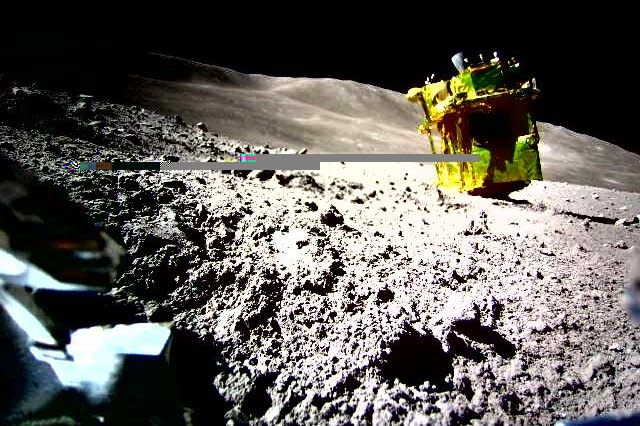JAXA says SLIM landing successful, deploys robots to moon's surface

Jan. 25 (UPI) -- Japan's Smart Lander for Investigating the Moon, or SLIM, landed on the moon Saturday about 180 feet, or little more than half a football field, away from its target landing spot, space officials said on Thursday.
The Japan Aerospace Exploration Agency said its landing technology allowed SLIM to land within 330 feet of the targeting landing location, calculating for obstacle avoidance maneuvers, hailing the touchdown positioning a success.
"While more detailed evaluation continues, it is reasonable to mention that the technology demonstration of pinpoint landing within an accuracy of [330 feet], which has been declared to be the main mission of SLIM, has been achieved," a statement from JAXA said.
In another development, JAXA reported that a small exploratory robots, has emerged from SLIM onto the lunar surface to conduct activities, including the first picture confirmation of SLIM on the moon, the space agency said.
"According to telemetry data, after deployment from SLIM, LEV-1 executed planned leaping movements and direct communication with ground stations, including inter-robot test radio wave data transmission from the Transformable Lunar Robot [LEV-2]," JAXA said.
JAXA shared the photo of the SLIM sitting on the lunar on X.
The Lunar Excursion Vehicle 2 (LEV-2 / SORA-Q) has successfully taken an image of the #SLIM spacecraft on the Moon. LEV-2 is the world's first robot to conduct fully autonomous exploration on the lunar surface. https://t.co/NOboD0ZJIr pic.twitter.com/mfuuceu2WA— JAXA Institute of Space and Astronautical Science (@ISAS_JAXA_EN) January 25, 2024
"The Lunar Excursion Vehicle 2 (LEV-2/SORA-Q) has successfully taken an image of the SLIM spacecraft on the Moon," JAXA's Institute of Space and Aeronautical Science said on X. "LEV-2 is the world's first robot to conduct fully autonomous exploration on the lunar surface."
While JAXA announced the success of its lunar robots, the fate of SLIM remains less certain because the agency has not found a way to generate power for it. It said anomalies during landing are still being analyzed but are hoping that solar panels will eventually generate enough power for it.
"Analysis of the data has shown that SLIM's solar cells are currently facing west, suggesting that there is the possibility for power generation and thus recovery of SLIM as the sunlight illumination conditions improve with time," JAXA said.
"Although SLIM's activities on the moon were originally expected to last only a few days, the necessary preparations for recovery will continue in order to acquire further technical and scientific data."

